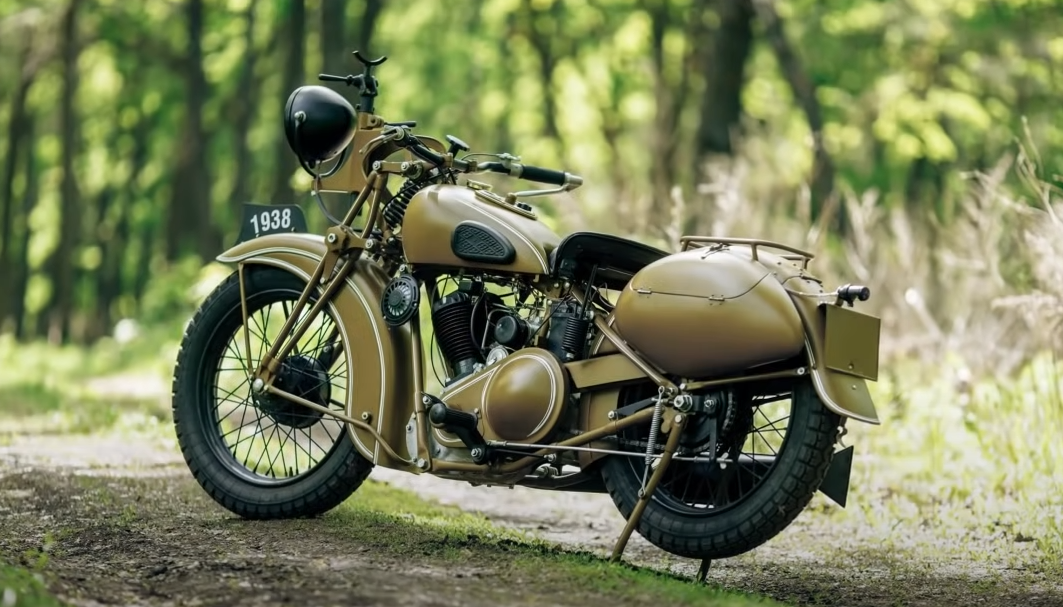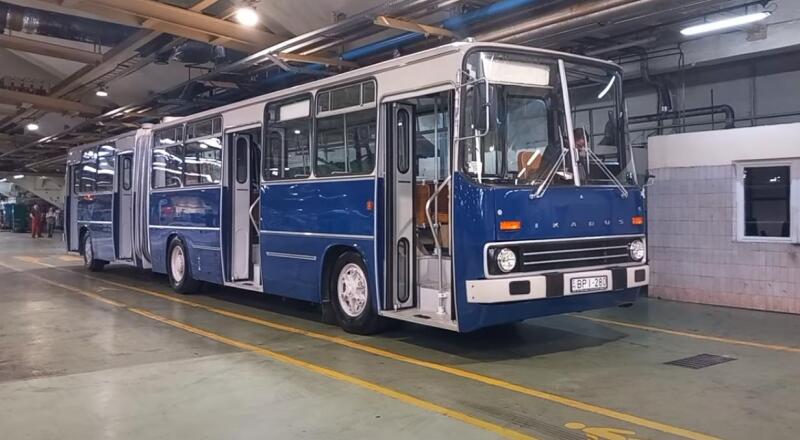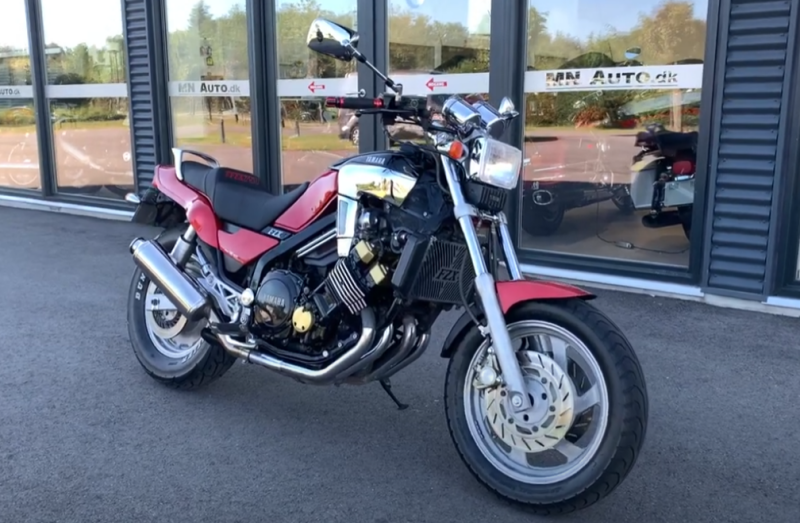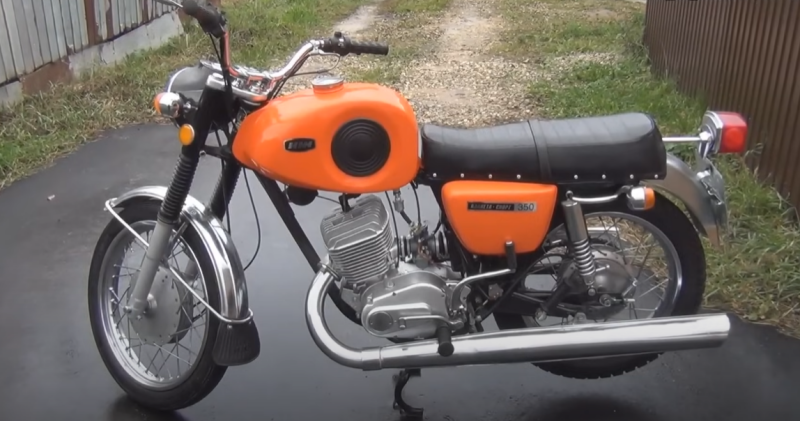The motorcycle industry of the USSR, as is commonly believed, is a copy of German bikes. Say, after the end of the Great Patriotic War, several factories for the production of two-wheeled vehicles were taken out of Germany.
If you do not go into details, then approximately so it was. But there can be no question of any factories - except for partially broken machines and a minimum of technical documentation. The former owners tried to destroy the production as much as possible so that the enemy would not get it.
 The famous M-72. Photo: Youtube.com
The famous M-72. Photo: Youtube.comI had to dismantle motorcycles exported from Germany, repair machine tools, think out and manufacture parts and assemblies in accordance with the possibilities. How it all ended, many experienced bikers know. They will also tell you that one of the first mass-produced motorcycles was the M-72 - a heavy “kosyasych”, which became the progenitor of the Urals and Dneprs.
Only the M-72 was developed back in the late 1930s, and it began to be mass-produced in 1941. Yes, it was copied from the BMW R71, but never built on German equipment.
 BMW R71. Photo: Youtube.com
BMW R71. Photo: Youtube.comThere were also earlier heavy military motorcycles with a sidecar in the USSR, they were also produced in the form of “loners”. We are talking, for example, about the TIZ-AM-600, a model whose mass production began back in 1935.
Organization of production of medium motorcycles
The first half of the 1930s became a landmark for the USSR - the country was actively built, new plants and factories appeared. Responsible workers needed a technique that could shorten the distance between destinations. There were not enough cars for everyone, so they developed motorcycle production.
In 1934, it was decided to convert the tool plant in Taganrog to the production of two-wheeled vehicles. Equipment was transported there from Kharkov, where the KhMZ-1M motorcycles were made. By the way, this model was assembled there for only three years, during which time about 300 copies were produced.
Part of the staff was transferred from Kharkov, other engineers were collected throughout the country. Basically, young specialists went to Taganrog, who had just graduated from higher educational institutions and had not yet had time to “settle down” in one place.
As the further development of the situation showed, there was no point in transferring motorcycle production. Although Taganrog eventually launched the production of two-wheeled vehicles, these are not medium, but heavy models.
 Motorcycles were made both with sidecars and without. Photo: Youtube.com
Motorcycles were made both with sidecars and without. Photo: Youtube.comThe reason is simple - the army needed just powerful motorcycles that could move relatively quickly off-road with a sidecar, a machine gun and a large ammunition load. Such a modern analogue of carts, although the Red Army did not plan to abandon the cavalry.
Selecting a model for production
The military clearly needed a heavy motorcycle, similar to the models popular in Germany and the UK. The question was put point-blank in 1931. Despite the position of the old cavalrymen, confident that the cavalry should prevail on the battlefields, it was decided to launch the production of motorcycles.
The Moscow Bicycle Plant was appointed as the enterprise responsible for heavy bikes. It was built with the help of the English BSA, equipment was also purchased from this brand.
The new motorcycle was supposed to be made four-stroke, with an engine of 500-600 cm3. The BSA-500 was predictably chosen as the sample. Only the management of the Moscow Bicycle Plant categorically refused to work on a new bike, arguing that they did not have the time and opportunity to develop it. Indeed, the enterprise was loaded to capacity with its products, which needed more and more.
 The main customer is the Red Army. Photo: Youtube.com
The main customer is the Red Army. Photo: Youtube.comIn 1935, Sergo Ordzhonikidze, who holds the post of People's Commissar of heavy industry, instructed the Taganrog plant to develop a heavy military motorcycle, where engines for the KhMZ-1M model had just begun to be mastered.
The task was given a clear one - by the end of 1935, try to produce 250 bikes. The deadlines were running out - the drawings and all the technical documentation were purchased in April. As for the British BSA-500s, they arrived in Taganrog at the end of September. Accordingly, to release 250 of their bikes before the end of the year was simply unrealistic.
Development of TIZ AM-600
Having considered the arrived English BSA-500s, the designers decided not to copy them completely. There were several reasons for this.
Required:
✅ Simplify design
✅ Strengthen the frame
✅ Put new wheels and fork
✅ Fully localize production
By the beginning of 1936, all work was completed, and the first batch of five motorcycles was made in April. They were shown to the public at the May Day holidays. By the end of the month, the bikes managed to pass state tests, after which they were shown to the selection committee.
 A carefully restored motorcycle. Photo: Youtube.com
A carefully restored motorcycle. Photo: Youtube.comSerial production was set up quickly - the first batch, consisting of 200 motorcycles, was ready by October. At the same time, a stroller was made at the Taganrog plant.
TTX
Military equipment must be reliable. It was under this motto that the motorcycle was developed. For example, when creating a tubular frame, the most loaded sections were made by forging. The fork is parallelogram, with a spring.
 Here you can see the features of the engine. Photo: Youtube.com
Here you can see the features of the engine. Photo: Youtube.comThe engine received a volume of 595 cm3 - it developed 16,5 liters. With. After a series of improvements, the power unit was able to boost up to 18 liters. With.
The gearbox is four-speed, the drive is chain, both from the engine to the gearbox, and from this unit to the wheel. The speed of a motorcycle without a sidecar was impressive - up to 95 km / h.
Modifications to the model
Until the mid-1950s, Soviet equipment, as a rule, was made according to the model and likeness of the best foreign models. These were not copies, but versions “based on”, taking into account the harsh Soviet reality, both in terms of roads and production capabilities.
 The rear suspension was stiff, so only the springs on the saddle were responsible for comfort. Photo: Youtube.com
The rear suspension was stiff, so only the springs on the saddle were responsible for comfort. Photo: Youtube.comIn the course of operation, the models were constantly refined. Often even copies from different batches differed from each other. Then all these changes were recorded only in the in-house documentation, and were not displayed in the instructions.
Differences between models of different batches:
✅ Wings
✅ Cylinder heads were found both in cast iron and aluminum
✅ Electrical equipment
✅ Engine crankcase
✅ Gas distribution covers
This is just what the restorers managed to find out. Unfortunately, most of the factory technical documentation was destroyed during the war.
Military career
Almost all TIZ AM-600 motorcycles were sent to serve in the Red Army. Bikes were used during the Soviet-Finnish war, where they showed their effectiveness. The Red Army soldiers on motorcycles acted faster than the cavalry and did not depend on the fatigue of the horses. Although, the equipment was not suitable for use in forests.
 Another result of painstaking restoration. Photo: Youtube.com
Another result of painstaking restoration. Photo: Youtube.comEspecially for the TIZ AM-600, they developed a rotary wheelchair turret - there was a machine gun. Even before the start of the Soviet-Finnish war, bikes regularly participated in parades.
Single motorcycles were also produced for the army, which received machine-gun turrets of a special design placed on the steering wheel. On the sides of the model there were special cartridge boxes for ammunition.
Most of the TIZ AM-600s were destroyed during the Great Patriotic War. Now these motorcycles are valued by collectors, as it is difficult to buy them.










